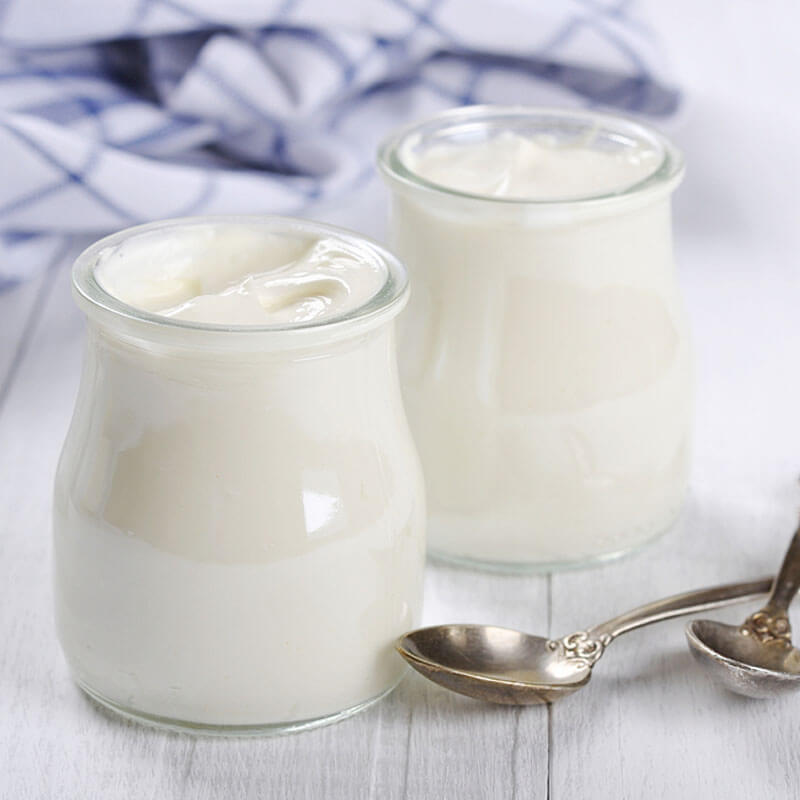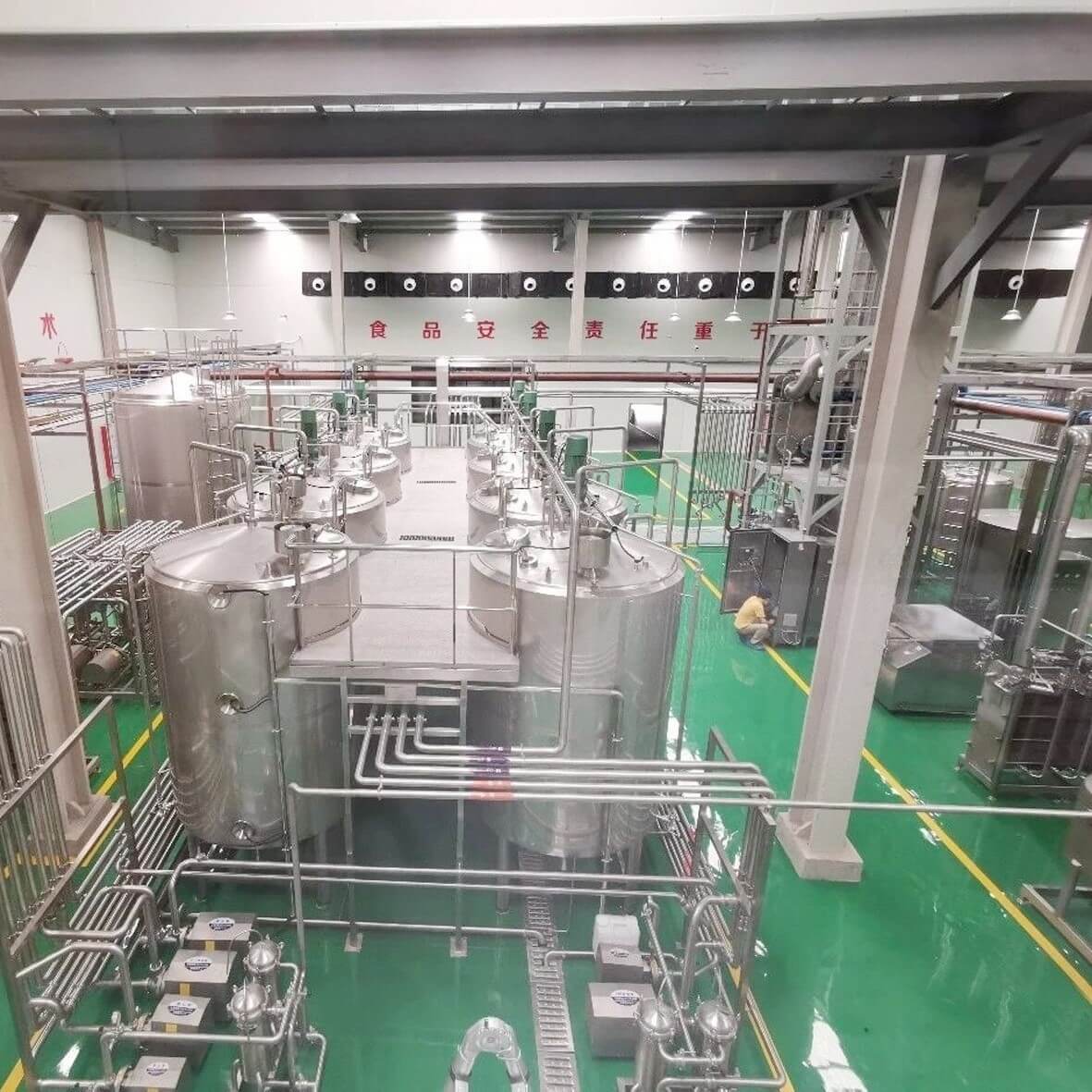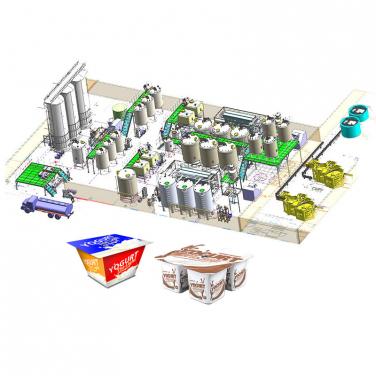
With the development of milk production technology, the current yogurt production line has replaced the previous manual workshop. The modern yogurt production line has more complex technology, of which seven processes will affect the quality of the final yogurt products. A set of high-quality yogurt production line should not only be able to produce high-quality yogurt, but also be reflected in the simplicity and convenience of operation, It is also reflected in the efficient use of raw materials and the environmental protection of mechanical equipment.
"Yogurt" refers to dairy products produced by fermenting and coagulating milk with starter, so that the final fermented product contains at least 107 CFU / g of product on the consumption date. Except in some cases, the use of completely dehydrated milk or milk derivatives in the form of milk powder is not allowed.
The protein content of milk or goat milk yogurt must be at least 3.2%, and the protein content of goat milk yogurt must be at least 5.5%. In the case of milk mixtures, the minimum protein content is calculated based on the proportion of milk types.
In the process of preparing yogurt, except for raw materials, only the following conditions are allowed:
Add sour cream to regulate fat content
Add milk protein for technical reasons
If other microorganisms are used for fermentation in addition to the typical culture of yogurt, it shall be indicated on the label, provided that the quantity is at least 106 CFU / g of the product on the date of consumption.

"Filtered yoghurt" refers to the product obtained from yoghurt after discharging part of serum after solidification, in which the protein content of milk or goat's milk is at least 5.6% and that of goat's milk is at least 8%. For different types of milk mixtures, the minimum protein content is calculated according to the proportion of different types of milk.
What are the specifications of traditional yogurt?
"Traditional" yogurt meets the following specifications:
It is prepared by traditional methods to form a thin film (skin) on its surface.
Completely fresh or pasteurized milk is solidified to the extent that it can be formed technically, and its natural composition has not changed (except for fat content adjustment)
1. Milk collection
During milk collection management, the site should be free of bacteria to avoid milk contamination (as at any stage of milk processing). The milk is weighed to calculate the amount of yeast required and the exact number of containers in which the milk will hatch.
2. Boiled yogurt
Although yogurt can be made from milk at room temperature, for the best and most stable results, most yogurt experts recommend heating the milk to at least 180 ° f or boiling point first.
The boiling phase aims to:
The boiling stage of milk will kill competing bacteria, and whey protein will denature and solidify to improve the viscosity and texture of the final product.
Pasteurization of milk
The solid components are concentrated by evaporation of water
The second element makes the traditional sheep yogurt have a better texture, so that the product has a richer taste. Boiling must be carried out in a special double wall kettle and stirred continuously.
3. Pasteurization of milk
Ultra high temperature treatment disinfects food by heating to more than 135 ° C.
Pasteurization is mainly used in the production of milk, but this process is also used in the production of goat milk, cream, soybean milk, yogurt, wine, soup, honey and boiled food.
4. Frozen yogurt
After boiling, put the milk into a plastic cup and let it cool freely gradually until the temperature reaches 45 ℃. At this stage, the milk is not stirred to form skin (skin). There is a certain yogurt machinery to make the yogurt production process smooth.
5. Add culture
At this stage, the milk is inoculated with the yogurt culture we obtained from the yogurt (fresh) of the previous day.
6. Yogurt culture
The inoculated milk was placed at 45 ° C until thickened in the incubator (about 2-3 hours).
7. Refrigeration - preservation of yogurt
Yogurt is transferred to a cold storage and stored at a temperature of 4 degrees Celsius. In the final stage, the yogurt is ready to be placed on a special trolley with shelves for emptying.




